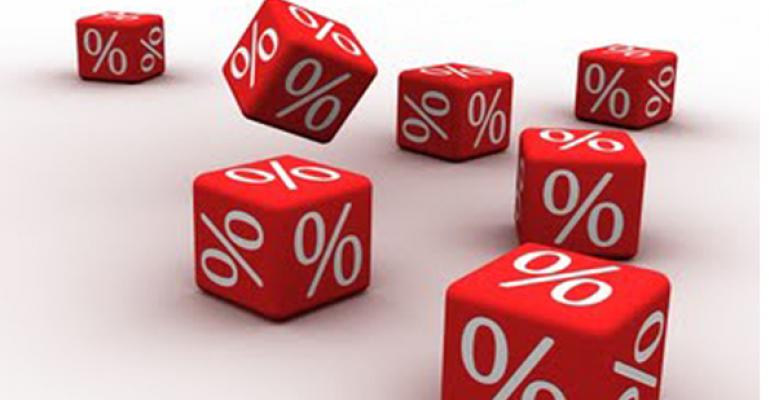(Bloomberg Opinion)—The Congressional Budget Office has just released its projections for the U.S. federal budget during the next 30 years. The picture is one of steadily rising deficits. Federal government borrowing now amounts to about 4.2% of gross domestic product each year. By 2049, the CBO predicts, that will more than double, to 8.7%:
There's No Catching Up
Only a small portion of these deficits will be due to tax cuts; the CBO projection expects that individual income taxes rise substantially as a share of GDP. Nor will it be due to government profligacy; CBO predicts that discretionary spending will shrink substantially relative to the size of the economy.
Instead, the growth in deficits is mostly about two things. First, government health care spending is projected to grow, which is partly due to population aging and partly because the CBO predicts that medical costs will keep going up. Second, and even more importantly, the CBO predicts that interest rates will rise, forcing the government to spend much more on simply paying interest on its debt. The federal government now pays an average of 2.4 % to borrow; in three decades, the CBO predicts that this will rise to 4.2%.
If true, that will cause an exponential increase in the amount the government has to pay for debt service:
The Burden of Debt
By the 2040s, the CBO projects, the primary budget deficit -- the gap between non-interest spending and tax revenue -- will stabilize at less than 4% of GDP, but net interest will keep on rising. This is because as the government borrows more and more to cover its interest payments, the amount of debt that’s accruing interest goes up.
In many ways, this is actually a very conservative forecast. The CBO assumes that the U.S. will raise taxes, instead of cutting them as it has done repeatedly. It assumes no future recessions requiring large increases in the level of federal debt for stimulus purposes. And most importantly, it assumes no big future increases in discretionary spending and no new big entitlements. If Medicare For All or the Green New Deal ever make it through Congress, the projected federal debt will be much, much higher.
Why is this a problem? If the government decides to cut deficits by raising taxes even more than the CBO predicts, it could slow the economy. If it decides to let the debt grow, it will have to borrow more and more in order to cover its increasing interest, and both borrowing and interest costs will snowball. That could provoke what the CBO calls a fiscal crisis -- a private investor panic about the government’s ability to repay its debt, causing a drop in bond prices that render financial institutions insolvent and causing an economic crisis.
The government thus has a good reason not to let debt spiral out of control. And the easiest way to keep that from happening is for the Federal Reserve to cut interest rates to zero and keep them there. As the government replaces its old, higher-interest debt with new, lower-interest debt, its yearly interest payments would go down, until finally they dwindle to nothing at all. Doing this would stabilize the deficit, and even open up fiscal space for big new spending initiatives on issues like climate change.
This situation -- where the central bank holds rates at or near zero in order to keep the government solvent -- is known to economists as fiscal dominance. Arguably, Japan has been in this situation for years:
An Interest Rate in Name Only
Some argue that Japan’s interest rates are low for natural reasons, mainly because of population decline and slow productivity growth. But Japanese central bankers’ periodic intentions to raise rates have probably been restrained by the country’s enormous public debt. Even if they wanted to, Japanese policy makers couldn’t raise rates very much without the specter of government insolvency.
Most macroeconomists think this isn’t much of a problem. Inflation is the traditional reason to raise rates, and Japan doesn’t have much of it. But there’s a possibility that long periods of low interest rates have negative consequences that don’t appear in traditional economic models. For example, low rates might encourage the survival of unproductive zombie companies, or it could allow monopolies to dominate markets with cheap borrowing. These potential downsides are not well-researched or well-understood yet.
The U.S. might also not be the same as Japan. Its investors could be more inclined to abandon the country for greener pastures if rates stayed too low for too long. With population expected to grow instead of shrink, the U.S. also might not be able to sustain zero rates forever without eventually risking inflation.
So the U.S. shouldn’t stride confidently into a brave new world of fiscal dominance just because Japan hasn’t yet collapsed. Just to be on the safe side, other measures to constrain deficits -- reducing excess cost growth for health care and reversing recent tax cuts -- would be prudent. But should these efforts turn out to be politically impossible, get ready for permanent zero interest rates.
To contact the author of this story: Noah Smith at [email protected]/ To contact the editor responsible for this story: James Greiff at [email protected]
© 2019 Bloomberg L.P.





